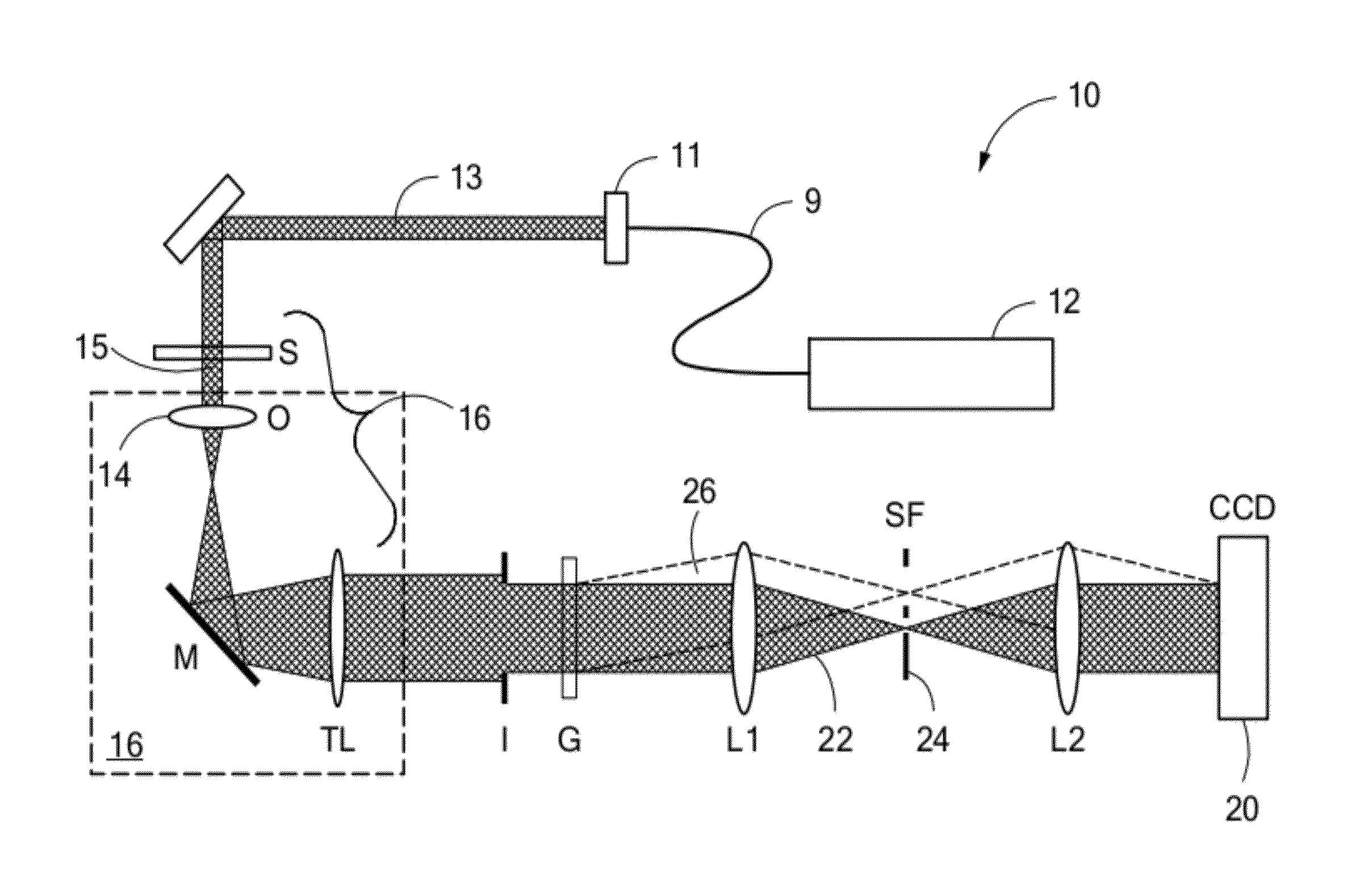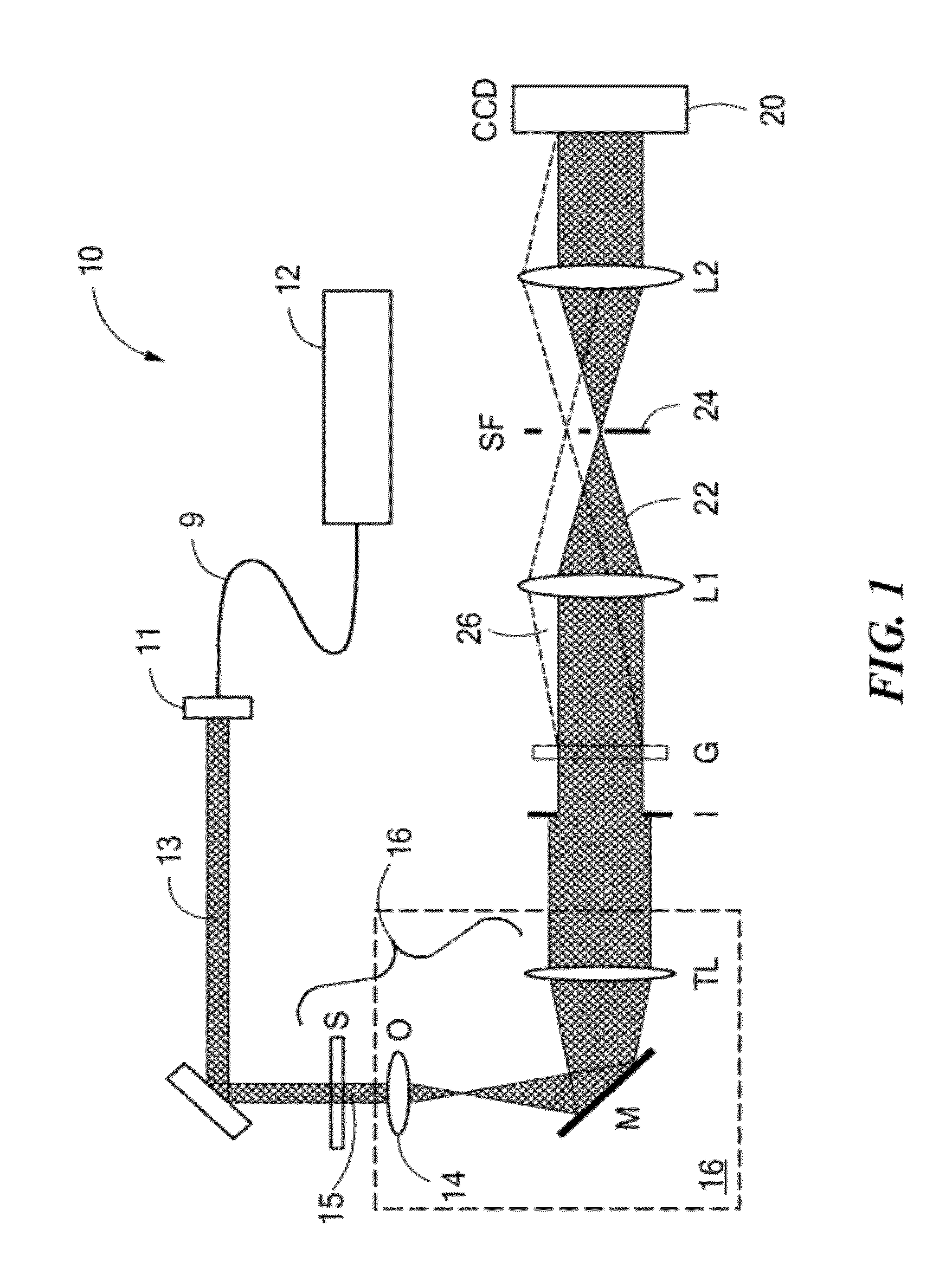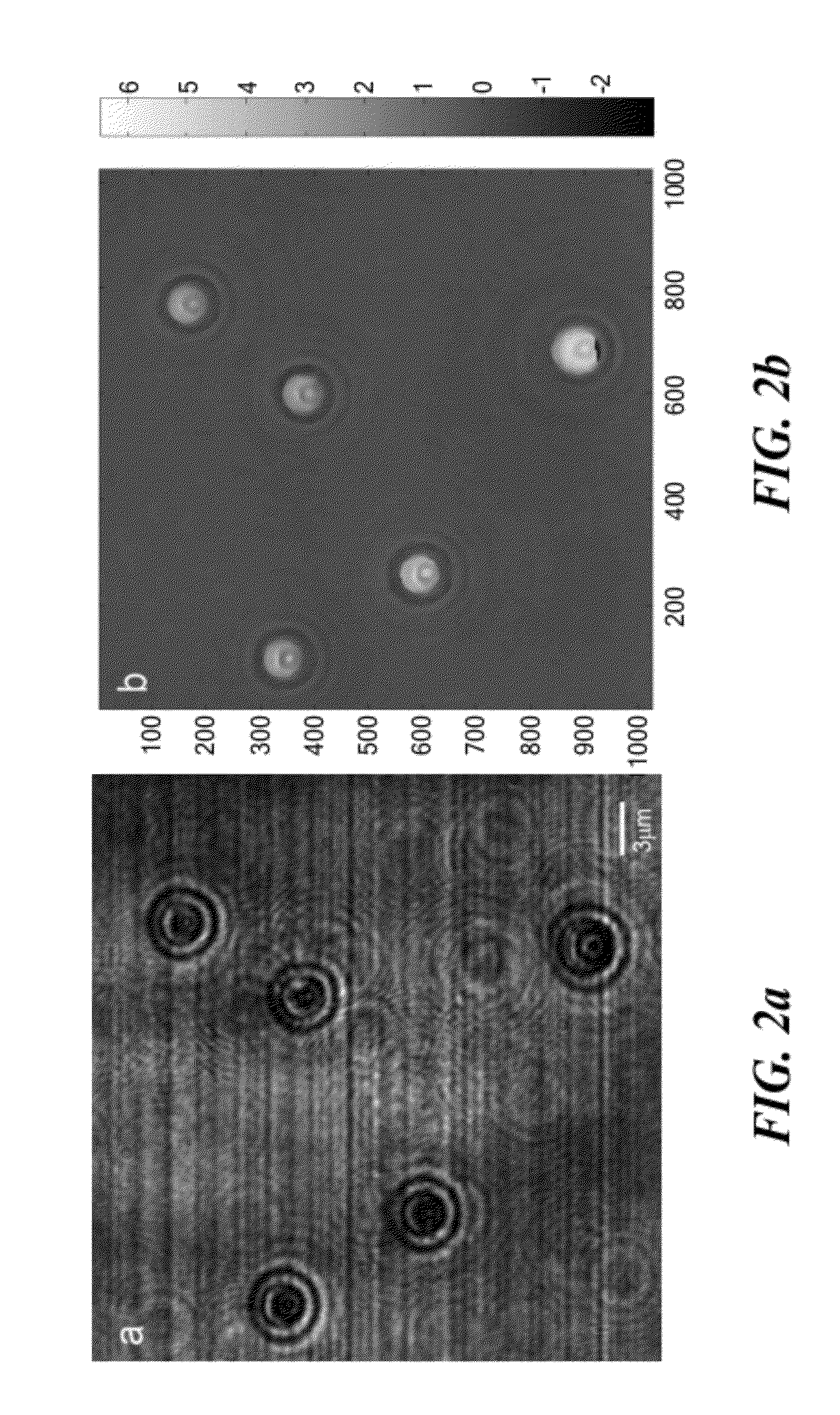Spatial Light Interference Microscopy and Fourier Transform Light Scattering for Cell and Tissue Characterization
a fourier transform and microscopy technology, applied in the field of spatial light interference microscopy and fourier transform light scattering for cell and tissue characterization, can solve the problems of inconvenient use, inability to investigate cells non-invasively, and inability to achieve the effect of invasive investigation,
- Summary
- Abstract
- Description
- Claims
- Application Information
AI Technical Summary
Benefits of technology
Problems solved by technology
Method used
Image
Examples
Embodiment Construction
[0071]In accordance with preferred embodiments of the present invention, the high spatial resolution associated with optical microscopy and the intrinsic averaging of light scattering techniques may be combined advantageously in methods referred to collectively as Fourier transform light scattering (FTLS) that may be employed for studying both static and dynamic light scattering.
[0072]General features of the present invention are now described with reference to FIG. 1, which depicts a Fourier light scattering apparatus, designated generally by numeral 10.
[0073]As will be described, FTLS provides for retrieving the phase and amplitude associated with a coherent microscope image and numerically propagating this field to the scattering plane. This approach may advantageously provide both the accurate phase retrieval for the ELS measurements and, further, the fast acquisition speed required for DLS studies.
[0074]While the FTLS apparatus 10 is depicted in FIG. 1 in the form of a common-p...
PUM
| Property | Measurement | Unit |
|---|---|---|
| light wavelength | aaaaa | aaaaa |
| coherence length | aaaaa | aaaaa |
| coherence length | aaaaa | aaaaa |
Abstract
Description
Claims
Application Information
 Login to View More
Login to View More - R&D
- Intellectual Property
- Life Sciences
- Materials
- Tech Scout
- Unparalleled Data Quality
- Higher Quality Content
- 60% Fewer Hallucinations
Browse by: Latest US Patents, China's latest patents, Technical Efficacy Thesaurus, Application Domain, Technology Topic, Popular Technical Reports.
© 2025 PatSnap. All rights reserved.Legal|Privacy policy|Modern Slavery Act Transparency Statement|Sitemap|About US| Contact US: help@patsnap.com



